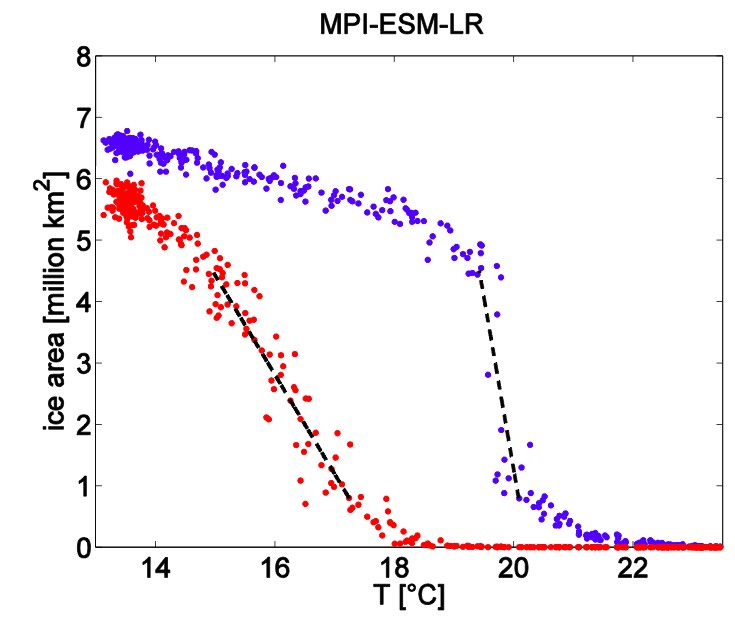
Why do we care about sea ice in the first place?
- Sea ice is important for several components of the climate system.
- Due to its high albedo, sea ice reflects a high amount of the incoming solar radiation and is therefore relevant for the Earth’s energy budget.
- Sea ice inhibits the exchange of heat, moisture and momentum between ocean and atmosphere, which usually occur at the sea surface.
- Where sea ice forms, it releases heat and salt. When sea ice melts, it takes up heat and reduces the salinity of the surrounding water. Sea ice therefore redistributes heat and freshwater.
- Sea ice provides habitat for plants and animals and hunting grounds for animals and indigenous populations.
- Sea ice is an obstacle for shorter commercial shipping routes through the Arctic and oil and gas drilling.
The Arctic sea-ice cover is decreasing!
In recent decades, the Arctic sea-ice cover has been retreating rapidly. As we care about sea ice (see above!), scientists have been trying to understand this decline and to define a time span over which the sea-ice cover is expected to totally disappear (usually below 1 million km²). Up to now, research has mostly focused on the Arctic summer sea-ice cover, as this is expected to disappear much sooner than the winter cover. However, it is also of interest how winter sea-ice cover will evolve in the future and has evolved in the past.
What is meant by summer and winter sea-ice cover?
The Arctic sea-ice area follows a seasonal cycle with a maximum in late winter and a minimum in late summer (see figure below).
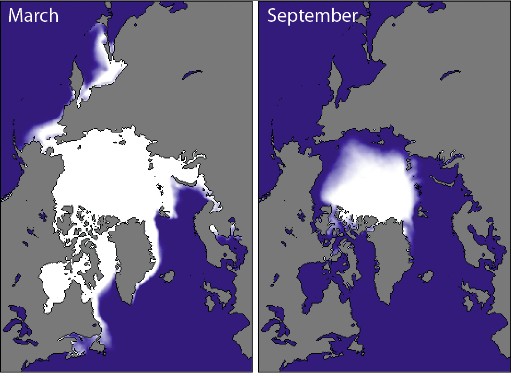
Figure 2: Arctic sea-ice concentration climatology from 1981-2010, at the approximate seasonal maximum (late winter) and minimum (late summer) levels based on passive microwave satellite data. (Credit : National Snow & Ice Data Center )
So, what about our Image of the Week?
In their study, Bathiany et al. (2016) compare the characteristics of the summer and winter sea-ice loss in the Arctic in general circulation models (GCMs). They investigate the changes in sea-ice area as a function of global annual mean surface air temperature. Summer sea-ice area (see red points) declines more linearly, “with no or a less pronounced change in slope”. Winter sea-ice area (see blue points), however, declines slowly at first and then more abruptly (this can still mean several years to decades, depending on the projection scenario used!). This abrupt decrease starts when ice volume is already very small.
How can this be?
Summer sea ice is distributed very heterogeneously over the Arctic, with very thick ice north of Greenland and Canada. It takes a given time (several years) until the thick multiyear ice (ice that has not melted during the previous summer) has melted. There can therefore still be ice in one location of the Arctic, while the rest of the area is ice-free. When these big “bunks” of ice have melted, then the summer sea-ice cover is gone. Large-scale abrupt shifts in sea ice therefore cannot occur in summer.
Winter sea ice, however, forms very homogeneously over the whole Arctic basin, when the ocean reaches the freezing temperature (the ocean temperature is relatively homogeneous over the basin). Warmer conditions in winter inhibit the growth of multiyear ice but a thin cover will always form on top of the ocean if the water is cold enough even if the ice melted in summer. Therefore, the sea-ice thickness and sea-ice volume decrease whereas the sea-ice area stays relatively constant and can still cover large areas (where the ocean is cold enough for ice to form). When the ocean does not reach the freezing temperature in winter, a large area of sea ice does not form any more and the sea-ice area declines abruptly.
What is the take-home message?
The explanation for the different behaviours in the retreat of summer and winter sea-ice is quite simple: the summer sea-ice cover disappears when all summer sea-ice has melted. The winter sea-ice cover disappears when no new ice forms in winter. As ice formation and ice melting are different processes governed by different mechanisms, the behaviour of the ice decline is different in both cases.
Note: These results are only relevant for the Arctic sea-ice cover as the Antarctic sea-ice cover is governed by different processes.
Further Reading
- Bathiany S., Notz D., Mauritsen T., Raedel G., and Brovkin V.: On the Potential for Abrupt Arctic Winter Sea Ice Loss, J. Clim. 29:7, 2703-2719, doi: http://dx.doi.org/10.1175/JCLI-D-15-0466.1, 2016.
Acknowledgement: Thanks a lot to Sebastian Bathiany, who took the time to make sure I understood his paper well and helped me to make this blog entry understandable 🙂
Edited by Emma Smith and Sophie Berger

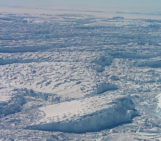
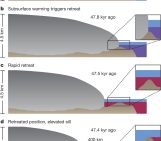
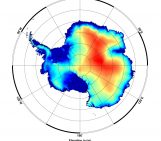
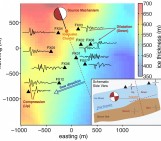
Pingback: Cryospheric Sciences | Image of the week — The warming effect of the decline of Arctic Sea Ice